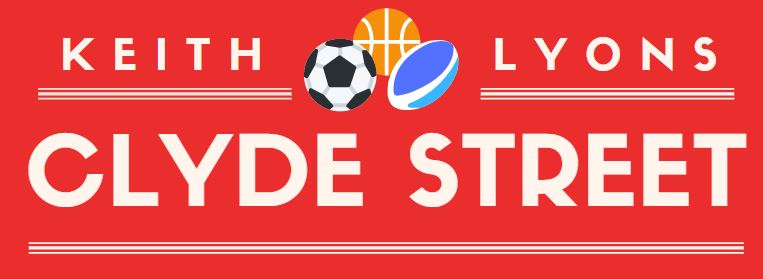Introduction
I was delighted to attend the AUSPIN Conference in Canberra on Tuesday.
I had the opportunity to share some ideas about open educational resources. It was a brief presentation just before lunch.
The process of sharing the presentation led to some interesting exchanges on Twitter.
Before I discuss these exchanges and where they took me, I would like to note how I prepared my presentation.
Creating an Open Resource
I was keen to share my presentation in advance of the AUSPIN meeting. The steps I took were:
- Google Slides with my preferred presentation format of Simple Light.
- Search for Creative Commons images on Flickr.
- Use minimal text with hyperlinks to all materials shared.
- Confirm the presentation (unless otherwise indicated) as a CC BY 4.0 license.
- Ensure that anyone on the internet can find a view the presentation. (Link)
- Blog about the presentation on Clyde Street.
- News of blog post defaults to Facebook (I have not been using LinkedIn).
- Tweet about the post and presentation using #AUSPIN16.
- Add an Audacity recording as a brief audio statement in the Clyde Street blog post (and use LAME add on for .mp3 files).
- Use Ogg Vorbis Audio File (.ogg) and MP3 (mp3) audio formats. Share files through DropBox (.ogg) (.mp3).
- Confirm that Conference attendees had received an email alert from the organiser to the presentation link on Google Slides.
I find it fascinating just how many different platforms can be used to create a resource. Each of us makes choices about the platforms we use. My choices reflect my experiences. Some time ago, I did use Garage Band to record all my audio files but I now feel much happier using Audacity with a USB microphone rather than my Mac’s internal microphone.

Sharing on Twitter
This was an early announcement about the presentation:
Delighted to be participating in #AUSPIN16. Some of my presentation ideas linked to #OER and #OERu: https://t.co/aYSNYSI69n
— Keith Lyons (@520507) August 31, 2016
On the morning of the presentation, I tweeted this:
Discussing open educational resources at AUSPIN 2016 https://t.co/3uSjOzeC7N pic.twitter.com/fIFi40y0w6
— Keith Lyons (@520507) September 19, 2016
In late night England, Simon Nainby, and Sporticus started discussing open educational resources.
Flip conference presentations and then unmeet? Move from reading out loud to discussing ideas in dynamic groups?
— Keith Lyons (@520507) September 19, 2016
Jonbrim joined in:
Powerpointlessness
— Keith Lyons (@520507) September 19, 2016
and then the follow up conversation
I ask the organiser to email the link to all participants. For smaller groups I write a personal note.
— Keith Lyons (@520507) September 19, 2016
The next day, Mark Upton shared this link:
@520507 Thought this might resonate with you Keith…https://t.co/auTLFoTcNU
— Mark Upton (@uppy01) September 20, 2016
This enabled me to follow up to find this workshop:
@SiNainby @ImSporticus @LeadCulturally @MattDickensSC Thanks to a lead from @uppy01 I was led to https://t.co/lImg13jCCH … a delight
— Keith Lyons (@520507) September 20, 2016
In twenty-four hours, these exchanges had created a micro-community that then went about other business.
I felt like this:

As with open educational resources, this pole vaulter has no limits … there is no bar in this sculpture, just the sky.
Asynchronous and Synchronous Sharing
My aim in this post has been to make explicit my process in creating an open educational resource. Twitter allows us to cross time zones and occupational cultures. News of my presentation started a flush of conversation that spanned hemispheres and was asynchronous.
My physical presentation at AUSPIN gave a synchronous opportunity to share and discuss ideas with structured attention.
The delightful experience of a connectivist world was that a presentation about openness took me to Canberra, England and San Diego in the time constrained only by my access to bandwidth and a reliable car.
Photo Credits
AUSPIN Meeting and Pole Vaulter (Keith Lyons, CC BY 4.0)
Presenting at AUSPIN 2016 (Edgar Crook, CC BY 4.0)








Keith – Thoroughly enjoyed your presentation, as ever. I am a big fan of openness, but I fear the battle is far, far from won! And even as a fan, I find it valuable to be regularly reminded of the value, for it is very easy to fall back into keeping things ‘confidential’. Re the presentation vehicle, Google slides is pretty much just a cheap Powerpoint. Maybe Prezi (https://prezi.com/) is an option? TN
Hello, Tony.
Thank you for finding the post and leaving a comment. I find it very helpful.
I take your point about Slides. I have tried a variety of presentation tools including Evernote cards, Prezi and MindMeister mindmaps.
There is some interesting discussion about Prezi and vestibular disturbance.
I have settled on Google for a range of tools available: Slides, Sheets, Docs, Forms, Sites. They integrate well and are in use in the educational community.
I do think each of us has a range of tools to use.
I wondered what your tools of choice are.
Best wishes
Keith
Keith,
I like that Prezi can take you on a virtual journey within a presentation. I also use it to create layers of information within a single image. But really, nothing beats listening to a good presentation. If the presenter is good enough, their voice is the only required tool – https://www.youtube.com/watch?v=nKbY9wONBeI
TN
Agreed 🙂
Thank you for the follow up comment and link, Tony.